Fan racks and other racks with fixed angle tubes are easier to wire up if the pin numbers correspond to tubes in an understandable pattern. Circle racks, like the PyroDigiT CLS30 rack shown in Figure 1 and the monstrous 28 x 4 rack shown in Figure 3 are good examples. Racks like these make use of a the “pre-wired pins” options discussed in Racks with pre-wired pins.
PyroDigiT CLS30
You can see in Figure 1 that the module pins in the center of the rack are laid out with an obvious correspondence to the rack tubes, 15 on the left half of the circle and 15 on the right half of the circle. Although, strictly speaking, these tubes aren’t pre-wired to specific pin numbers, it would certainly make things easier on the crew if the pin numbers corresponded to the tubes in a natural way. The “pre-wired pins” options for racks in Finale 3D can guarantee that is the case.
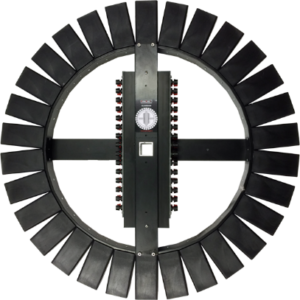
Figure 1 – PyroDigiT CLS30 circle rack is well suited for using pre-wired in Finale 3D.
To create a rack with pre-wired pins, do “Racks > Create rack…” to bring up the rack configuration dialog. Figure 2 shows the configuration for the PyroDigiT CLS30. The three circled areas on the dialog are the salient input fields.
Since the rack houses single-shots at fixed angles, the rack structure is “Single-shot rack, fixed angle tubes”. The “Pre-wired pins” selector in the second red circle specifies the required correspondence between the rack tubes and pin numbers. To understand this field, you need to look first at the specifications of this rack’s tubes. This rack has a total of 30 tubes. If we weren’t concerned with the wiring, we could represent this rack as one row with 30 tubes in it, and we could specify the angles of all the tubes starting at 0 degrees (up) and rotating around. But the wiring concerns for this particular rack and module type complicate matters.
You can’t really see it in the picture, but the two module rails of 15 pins are oriented with their pins running in opposite directions. The rail on the left half of the circle begins with pin number 1 at the bottom, incrementing upward to 15 at the top. The rail on the right half of the circle begins with pin number 1 at the top, incrementing downward. Let’s call the rail on the left the first rail, and the rail on the right the second rail. We can now define specifically what correspondence we would like between the tubes and the pin numbers. There’s no hard lined requirement forcing us to use a specific correspondence because the rail pins aren’t actually pre-wired to the tubes in the physical world. It would be possible to extend a wire from any one of the pins to any one of the tubes. But let’s set this up to make it easy on the crew.
Let’s define that the tube aiming straight down is wired to pin 1 of the first (left-side) rail. The tube aiming a little more to the left, rotating around the circle clockwise, is pin 2 of the first rail, and so on, up to the slightly left of vertical tube being pin 15 of the first rail. Keeping in mind the orientation of the second rail, we will define the tube aiming straight up to be pin 1 of the second (right-side) rail; the next tube aiming slightly to the right, continuing clockwise, is pin 2, and so on, down to the nearly straight down tube being pin 15 of the second rail.

Figure 2 – Pre-wired pins rack configuration for the PyroDigiT CLS30 rack
You can see now in the third circle of Figure 2 how this configuration defines the tube angles of the rack. The rack is defined as two rows of 15 tubes each. The first row, representing the left side of the circle, begins with the tube angled at 180 degrees, straight down! The next tube in this row is at angle 192 degrees, with rotates it a little to the left, clockwise. Although you can’t see the full list of 15 angles in the first row of the red circle, the last number is 348, representing the tube angle slightly to the left of straight up.
The second row of the rack is also 15 tubes. It begins with the tube angle 0, straight up, and continues with additional tubes spaced out in 12 degree intervals. The last number in the tube angles of row 2 is 168, angling just right of straight down.
Having defined the tube angles in the row specifications, we can now return to the second red circle, which specifies the correspondence between the pins and the tubes. The option “Sequential by rows, left to right, half and half” means that,
- Sequential by rows. The tubes are sorted sequentially by rows, meaning the first row would have tubes 1..N, and the next row would have tubes N+1..2N, etc.
- Left to right. The rows are sorted left to right. The “rows” that the rack configuration dialog refers to are actually vertical if you are looking at the rack in a top-down view as in the rack diagrams. The reason for this is that a simple wooden rack with one “row” is naturally oriented vertically in the top-down view, so if a rack definition had multiple rows, the additional rows would also be vertically oriented, stacking to right like a picket fence in the top-down view. Thus “left to right” in the specification just means that row 1 (our left half of the circle) has tubes 1..N, and row 2 (our right half of the circle) has tubes N+1..2N.
- Half and half. Instead of the tube numbers corresponding to pins of exactly the same numbers, the tube numbers are divided half and half into two groups, and both groups correspond to the same pin numbers. Thus in our example of 2N tubes (N = 15), the first 15 tubes correspond to the first 15 pins of a firing module (pins 1-15) and the second 15 tubes also correspond to the first 15 pins of a firing module (pins 1-15, the same).
These “pre-wired pins” restrictions force the tubes of the PyroDigiT 30CLS to correspond naturally to the pins in the two rails mounted in the rack. If you define your racks with this configuration, then your crews can know when setting up the show that pin 1 of the first rail is always the straight down tube, and the next pins continue around the circle clockwise. This correspondence is 100% independent of the firing order of the shots or addressing order of assignment. No matter what the firing pattern looks like in the show, the setup is the same.
28 x 4 circle rack using 4 modules
If your modules have at least 28 pins, then the 28 x 4 rack shown in Figure 3 may be easiest to setup with four modules, each module serving one complete circle of 28 tubes (leaving 4 pins left over if your modules have 32 pins, for example). The obvious advantage of this setup is that each cluster of 4 tubes could use the same pin numbers on its 4 modules. All the pin 1s could go to the first cluster of 4 tubes; all the pin 2s could go to the second cluster; and so forth. Using “Pre-wired pins” in the definition of this rack in Finale 3D can guarantee this regularity no matter what the firing pattern or addressing order of assignment is.
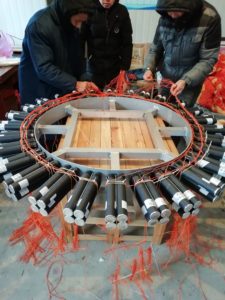
Figure 3 – A 28 x 4 point circle rack is much easier to setup using the “pre-wired” pins option in Finale 3D.
The rack configuration for this 28 x 4 rack is shown in Figure 4. Like the PyroDigiT rack, this rack configuration is a single-shot rack with fixed angle tubes. However, unlike the PyroDigiT rack, the natural way to model this rack is with four rows of 28 tubes each. The “Pre-wired pins” constraint is “Sequential for each row”, meaning that each row has sequentially ordered tubes corresponding to the first N pins of a module.
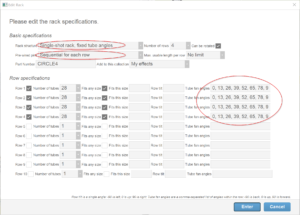
Figure 4 – The 28 x 4 point rack can be represented as four rows of 28 tubes each.
After creating the rack and and addressing the show with “Addressing > Address show…” using any order of assignment, the pin numbers fill into the tubes regularly for the four modules as shown in Figure 5. The example show illustrated in Figure 5 consists of four completely different firing orders for four sequences of shots around the circle, but the pin numbers are the same for all of them because of the “Pre-wired pins” constraint.
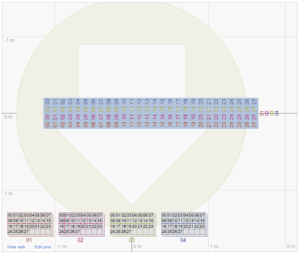
Figure 5 – The large 28 x 4 rectangle represents the circle rack with 28 angles, 4 tubes each in the rack layout screen.
Angle problems with circle racks
It is important that the tube angles of the rack align exactly to the shot angles in the show design. Sometimes that requires some extra work. Take for example the 28 x 4 circle rack. The number 28 does not divide evenly into 360 degrees, so the angle intervals between the tubes in the real world are fractional numbers (360 / 28 = 12.857 degrees). To make the circle fan in the show design, add 28 shots to the show and select all of them. Then do the command “Script > Angles > Make into fan…” and choose 12.857 as the angle interval, having calculated that number with a calculator as 360 / 28. For a circle fan you can’t simply set the total angle in the fan dialog to 360 because that would create two coincident shots at angles 0 and 360, which are the same angle. Circle fans have one more angle gap than regular fans for the same number of shots.
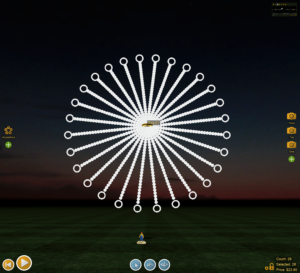
Figure 6 – The angle intervals of a 28 point circle rack are fractional numbers since 360 / 28 = 12.857 degrees.
Once you have created your circle fan of shots, you need to create a rack with identical angles. Since the angles are all fractional, it is easiest to create the rack tube angles using cut and paste. In the script window, drag a tall, skinny selection rectangle over the 28 cells in the “Tilt” column of your circle fan of shots. Copy with control-C and paste these 28 angles into a text editor. Then combine the list of angles into a single line, separated by commas. Copy/paste that list of numbers into tube angles fields in the rack configuration dialog shown in Figure 4. Since these angles are copied from the actual shot angles, they are guaranteed to match exactly.
